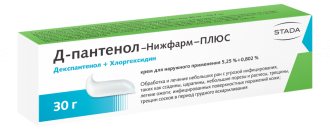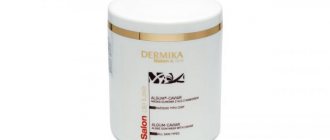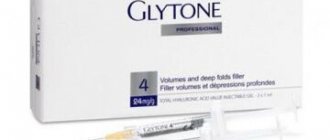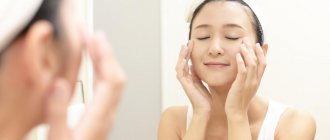Massage therapy at a SPA center with essential oils can simply relax and calm you down. And some techniques will help cope with real diseases.
Therapeutic or therapeutic massage refers to physiotherapy: it can be prescribed by a doctor to eliminate muscle pain and stiffness in movement. Psychotherapists prescribe massage therapy to treat mental and emotional problems, including stress, anxiety, and depression.
What types of therapeutic massage are there?
Experienced massage therapists master several techniques at once. There are even trends: 10-15 years ago everyone was fond of Swedish massage, and today gua sha is popular. But each technique has its own advantages and disadvantages. It cannot be said that one method is better than another. A good therapist himself selects a technique based on the client’s requests.
Some techniques involve the use of oils and medicinal ointments, others are performed “dry”.
Most massages require you to undress, although some massage therapists work through your clothes. When choosing a specialist, you need to check the certificates and understand what techniques he knows. A good massage therapist will listen to all wishes, check indications and contraindications and develop an individual therapy program.
However, you need to know the features of each technique in order to understand what to expect from the procedure.
Manual massage: features and specifics
The specificity of this procedure is considered to be an improvement in the blood supply to the body in the absence of a phenomenon accompanying this process - the accumulation of lactic acid in the muscles, which provokes the appearance of pain symptoms. The features of hand massage also include the possibility of combining various techniques to enhance the effect, as well as the use of additional tools.
The duration of the procedure varies and can take 10-15 minutes or as long as 1.5 hours. The session time is set individually and depends on:
- the purpose of the procedure;
- gender, weight and age of the patient;
- task volume (zone size);
- diagnostic results;
- indications for the procedure.
It usually takes about 15-25 minutes to work on one area of the body. During this time, you can do a full manual massage of the neck, back, and lower back. A massage therapist can spend 20-30 minutes on the procedure for the lower extremities, and 15 minutes for the upper extremities (1 hand ~ 7 minutes). The area of the chest and abdomen is usually taken away from the massage therapist for 15 minutes. The total duration of the session does not include the time during which the person prepares the patient’s body for the session.
Swedish massage: a relaxing, painless technique
Those who have never had a massage should start with painless, relaxing techniques. The Swedish technique includes soft, long, kneading movements, as well as light, rhythmic, tapping movements on the upper layers of the muscles. Additionally, passive movements of the limbs are performed.
A course of Swedish massage will relieve muscle tension, at the same time relax and energize you.
The four most common Swedish massage techniques are:
- fleurage:
smooth sliding movements aimed at complete relaxation of soft tissues;
- petrisage:
squeezing, kneading movements, which can alternate with light blows;
- tapermo:
deep, circular, rubbing movements that help activate blood flow and remove scar tissue;
- tapoment:
short, alternating tapping with folded palms and fingers.
Swedish massage perfectly relaxes the body and also helps relieve stress.
Correct technique and execution
Back massage is considered one of the simplest techniques, so many people perform it even at home. However, this will require a partner: a spouse, a close relative, etc.
The session is performed on the floor, a hard mattress or a special massage couch. The optimal indoor temperature should be approximately +22 degrees Celsius. The procedure is performed with the person lying down (to massage the entire back) or sitting (to massage the cervical-collar area).
The back massage technique involves the use of a number of techniques:
- Stroking. The movement with which each session begins and ends. Performed with a light movement along the spine and sides, from bottom to top. This allows you to disperse the lymph and prepare the muscles for deep impact. Stroking can be done with your fingertips or the entire surface of your palm.
- Trituration. This technique helps improve blood circulation. Most often it is done in a spiral or in a circle, at least 3 times in one area. The pressure force gradually increases. Rubbing is performed from the bottom up, towards the shoulders. They can be done with your fingertips, the entire surface of your palm, or your thumbs.
- Kneading. It is the main technique when performing classical massage. Includes three elements: gripping the skin, pulling with compression, and rolling with strong pressure. Tissue gripping is performed with both hands simultaneously on the entire surface of the back, excluding the spine area.
- Squeezing. It is somewhat similar to rubbing, but only involves greater intensity and speed. It is aimed at the deep layers of tissue, so all movements occur towards the lymph nodes. Performed with the front or back of the hand.
- Vibration. This technique involves various vibrations of the body with different amplitudes. Used at the end of a session to relax the tissues and eliminate any muscle discomfort. Performed with fingertips, palm or fist using clapping and shaking.
You should start the session with light strokes, which will help prepare the muscles for the session. After this, as a rule, the massage therapist moves on to squeezing and rubbing. The main effect is exerted through kneading, which is carried out with different intensities. To finish, vibration, light tapping and patting are used. After the procedure, you can take a warm shower and have a light meal.
Photo: by Gustavo Fring: Pexels
At home, five basic techniques will be enough to massage your back.
If you have experience in carrying out such manipulation, you can supplement the session with a few more massage movements:
- Double stretch. This technique is necessary to target the long back muscles and spinal extensors. Stretching and rubbing of the muscles is performed, which allows you to relieve tension and eliminate stiffness of movement. Hands should be close to the spine, fingers pointing down. Using strong pressure, you need to move your hands down the muscles to the lower back and back. Gradually the pressure and stretching speed increase.
- Pressure along the spine. These movements serve to relax the muscles along the spine. It is important that the pressure is applied exclusively to the muscles, without affecting the spine itself. The technique is done from top to bottom, from the shoulders to the base of the spine. You can do it with the pads of your thumbs.
- Overlapping movements. This technique is used to “calm down” the muscles after pressing. Gentle, gentle stroking of the muscles along the spine is expected. In some ways, the movement is similar to stroking, but is performed with the knuckles.
Photo: Google Images
Deep tissue massage
A rather painful technique that allows you to work deep muscles, eliminate tension, and joint problems. The massage therapist's movements are slow, but very intense. The specialist literally “takes into his hands” the organs, kneads the tendons and fascia located deep under the skin.
Deep tissue massage cannot be called relaxing. But it is this technique that has a real therapeutic effect. A course of massage therapy usually does not last long, but it can relieve chronic tension, eliminate sprains and speed up recovery from injuries.
Indications
Classic medical massage is prescribed if a person has the following diseases and conditions:
- degenerative-dystrophic changes in the spine;
- radicular syndrome;
- headaches associated with osteochondrosis of the cervical spine;
- consequences of traumatic lesions of ligaments, joints, bones and muscles;
- joint pathologies: arthritis, arthrosis;
- paresis and paralysis resulting from strokes, traumatic brain injuries;
- bronchitis, pneumonia, diseases of the ENT organs;
- hypertension, hypotension, angina pectoris (except for the acute stage);
- neuralgia, neurasthenia, depressive syndrome, stress;
- diseases of the genitourinary system (urological or gynecological massage is used).
Stone therapy using hot stones
For this type of massage, the therapist places heated stones on specific areas of the body, such as acupressure points. Smooth pebbles can be used as massage tools. Stone therapy is designed to promote deep relaxation and calm. Hot stones are also used to relieve muscle tightness because they can transfer heat deep into the skin.
Classification
The classification of massage includes several types. Depending on the purpose, the massage can be:
- therapeutic – restores the body after illness and injury;
- sports – prepares the body of athletes for competitions and training, helps prevent injuries, relieve excess tension after physical overexertion;
- hygienic – strengthening the body. This type of massage also includes relaxation and cosmetic massage.
Prenatal massage for pregnant women
During pregnancy, a woman's body undergoes major changes. A special massage allows the body to quickly adapt to a new function, as well as cope with the negative consequences of bearing a child. An experienced specialist can reduce swelling of the limbs and relieve lower back pain without harm to the fetus.
Massage may be the only option for women who are prohibited from taking medications. The main thing is to make sure in advance that the massage therapist has a table designed specifically for working with pregnant women.
The effect of massage on the body
The nature of the effect of massage on the body is determined by the mechanisms of its action. The latter are divided into 3 types:
- Humoral . Skin receptors actively react to massage manipulations, as a result of which the body releases bioactive substances (acetylcholine, histamine, etc.). They are distributed through the bloodstream throughout all systems and contribute to the overall health of the patient.
- Nervous reflex . By performing certain actions, the massage therapist transfers his energy to the patient’s muscles, joints and skin. In the receptors of the latter, this energy is converted into a nerve impulse. It reaches the central nervous system, which begins to adjust the functioning of all other body systems.
- Mechanical . Direct impact on a specific area leads to increased blood circulation and lymph outflow. This mechanism has an excellent effect on the functioning of the heart and blood vessels, eliminates congestion in tissues, improves skin respiration and metabolism in general.
The first human organ that is positively affected by massage is the skin. The friction of the massage therapist's hands on the surface of the back, hips and other parts of the body causes a rush of blood to the surface of the epidermis and removes dead cells. Renewed skin absorbs oxygen better. The cells of the deep layer - the dermis - function more actively.
Massage strengthens the skin, stabilizes the sebaceous glands, as well as metabolism in superficial and deep tissues. The skin becomes elastic and toned. With more vigorous exposure, the tone of muscles and ligaments increases. Activation of blood circulation has a positive effect on the condition of all parts of the body.
Benefits of therapeutic massage
Even if there are no health complaints, it is recommended to visit the massage room at least once a week. The procedure will help you relax, get rid of anxious and obsessive thoughts. The specialist will relieve accumulated muscle fatigue.
Cosmetic massages help reduce wrinkles and improve complexion. You will learn how to do self-massage for wrinkles in our article.
After a course of massage treatment of 10 procedures, you will notice:
- general improvement in blood circulation (a blush will appear on the cheeks, hands and feet will not be constantly cold);
- disappearance of muscle pain;
- improving flexibility, range of motion of joints;
- normalization of heart rate;
- reducing feelings of anxiety;
- eliminating symptoms of stress.
In most cases, massage is pleasant and painless. Don't deny yourself pleasure. Find “your” master on the website 7hands.com. Relaxing types of massage techniques have no contraindications and do not require prior consultation with a doctor.
Full body massage effect
The result of a classic full body massage is complex. After the procedure, the patient feels cheerfulness, lightness, and a surge of strength. This is achieved by improving blood parameters (removing toxins, normalizing pressure, improving the patency of blood vessels and capillaries).
In addition, massage accelerates metabolic processes - the skin is renewed, muscles become more elastic, organs and tissues are better fed with oxygen. All this works to strengthen the immune system, improve mood, and increase tone.
The functioning of the nervous and digestive systems is normalized. The load on the heart is reduced, the complexion improves, pain in the muscles, ligaments, and tissues recedes.
An important effect of therapeutic massage is lymphatic drainage. Thanks to it, excess fluid is removed from the tissues. This starts the natural process of weight normalization. Yes, a general massage will not replace an anti-cellulite massage, but it will help you lose weight.
What diseases and pathologies can you contact a massage therapist for?
If you plan to undergo therapeutic body massage, it is better to consult a therapist. The doctor will help you choose the optimal technique and make all the necessary notes for the massage therapist.
A course of therapeutic massage is not limited to simple relaxation. A massage therapist will help you cope with the following problems.
- Back pain, radiculitis, hernia. Hot stones and deep muscle work will help restore your range of motion.
- Headaches, migraines. Targeted treatment of trigger points eases the course of the disease and improves sleep.
- Arthrosis, arthritis. The study found that patients who received an hour-long Thai massage twice a week were less likely to use painkillers and also showed an increased range of motion.
- Cancer. For certain types of cancer, massage (especially lymphatic drainage) is strictly prohibited. But patients who do not suffer from metastatic forms of cancer, and have already completed the main course of treatment, can go to a massage therapist to speed up the recovery of the body. Swedish massage will relieve depression and activate the immune system.
- Depression. Psychotherapists often prescribe massage therapy for people who are unable to cope with negative thoughts. Some techniques are even indicated for generalized anxiety disorder. If you complement massage therapy with regular breathing exercises and yoga, then depression and anxiety can be dealt with without medications.
There are many more benefits to having a professional massage. You can simply call an experienced specialist and discuss indications and contraindications with him.
Massage of the cervical-collar area
Therapeutic neck massage is used to treat pathologies of the cervical-collar area. It helps eliminate such unfavorable conditions as:
- headache;
- chronic fatigue;
- neck pain;
- muscle spasms;
- sleep disturbance;
- decreased performance.
Therapeutic massage for osteochondrosis of the cervical spine is an important component of therapy. Massage helps normalize blood flow and restores the patency of nerve fibers. Thus, the brain begins to receive the necessary amount of nutrients for normal functioning.
Therapeutic massage of the cervical-collar area relaxes the neck muscles, relieves tension and fatigue. The procedure improves blood circulation in the cervical-collar area, which helps eliminate pain caused by excessive physical activity, swelling or tissue inflammation. After a course of massage of the cervical-collar area, patients note a significant improvement in well-being and mental activity.
What else you need to consider: contraindications, possible side effects
Like any other physiotherapeutic procedure, therapeutic massage has contraindications. A massage therapist may refuse to perform a procedure on a patient if there are symptoms of ARVI or any infectious or inflammatory disease.
While taking blood thinning medications, it is recommended to replace deep massage with superficial relaxing techniques. Otherwise, hematomas may appear on the body.
“Local” contraindications, such as burns and open wounds, are not always a reason to reschedule a scheduled session. If the patient does not feel pain or discomfort, the specialist will perform a massage, going around the problem area.
As for unpleasant side effects, in most cases patients have no complaints.
But after myofascial release and deep tissue massage, body aches and soreness may occur. Usually, unpleasant symptoms disappear on their own a few days after the procedure.
During the massage itself, slight discomfort is allowed. But if the painful sensations are so intense that it is impossible to endure, then you need to inform the specialist. The specialist will select the optimal pressure force.
Overall, numerous studies confirm the safety of therapeutic massage. But you should not think that a physiotherapeutic procedure can replace prescribed drug treatment. Massage does not replace drug therapy, but only complements it.
Contraindications
Massage procedures are contraindicated in the following cases:
- during feverish conditions;
- patients who have a tendency to develop bleeding;
- persons with impaired integrity and infectious lesions of the skin;
- for thrombosis, thrombophlebitis, varicose veins of the second and higher stages;
- with an aneurysm;
- with severe vascular spasm, damage to the vascular walls;
- with severe atherosclerosis;
- for blood diseases;
- cancer patients;
- with damage to the lymph nodes;
- persons with mental pathologies;
- for urolithiasis and cholelithiasis (if a massage of the lower back and abdomen is planned);
- patients with active tuberculosis, AIDS, scurvy, osteomyelitis.
How to choose a good massage therapist
In order for the completed course of procedures to be beneficial, you need to spend time selecting a good specialist. On the website 7hands.com you can find many resumes of proven specialists.
Before making your first appointment, be sure to arrange a preliminary interview. In addition to checking educational documents and letters of recommendation, it is important to evaluate your feelings. Sometimes even the most experienced specialist does not inspire emotional trust. Therapeutic massage will be most effective if the patient can completely relax.
In most cases, clients tend to choose massage therapists of the same gender.
There is no need to pay for the entire course of procedures at once.
You may realize during your first session that the specialist has not understood your individual needs. But the time and material costs of finding “your” massage therapist will definitely pay off. 2 thousand 4.3 Rate this article Published: 06/24/2021
What diseases can be cured by massage?
First of all, people with pathologies of the musculoskeletal system need massage. In this case, timely contact with specialists can not only prevent the development of complications, but also stop the development of the pathological process in combination with other types of therapy. These include radiculitis, osteochondrosis, herniated intervertebral discs, poor posture, injuries, neuralgia, and neuritis.
Special medical massage techniques make a huge contribution to the treatment of children with cerebral palsy. Also, with the development of chorea against the background of acute rheumatic fever, obsessive movements syndrome, hyperactivity, a combination of various massage techniques helps to improve both the patient’s condition and social adaptation.
For patients with psychosomatic pathologies, therapeutic and classical types of massage help them recover faster, learn to relax, and control their condition.
Rehabilitation programs for people after strokes, acute coronary syndrome, severe long-term illnesses are the right solution for improving the general condition of the body, the functioning of the cardiovascular and nervous systems, recovery, improving motor functions, body endurance and adaptation to physical activity.
Massage is also relevant for those who have been on diets for a long time. Most often, when losing weight, especially without physical exercise, muscle mass “does not have time” to adapt to the changes occurring in the body. As a result, muscle weakening leads to prolapse of internal organs and, accordingly, their dysfunction.
In general, most diseases require physiotherapeutic treatment in the form of massage. The main thing in such cases is to exclude contraindications to manipulation and find a good specialist.
Required number of wellness massage sessions
To achieve a significant effect, it is advisable to carry out a wellness massage complex. A single procedure will not give long-term results, but will only alleviate the condition for a while.
A course of healing massage of the back or other parts of the body usually includes from 8 to 15 procedures. Please note that you can save money by purchasing the entire package rather than paying for each session individually.
Thai massage can compete with the classic massage. This technique, which came from Asia, can be suitable not only as a healing massage for men. Its unique atmosphere and many additional bright details will help you relax, improve your body’s condition and serve as a healing massage for women. The result in the form of improved well-being in this case is achieved effectively in the same number of sessions.
Any procedure, including a wellness facial massage, is an investment in your health, performance and appearance. Such an investment will definitely yield a positive result. However, you need to choose a salon or clinic based not only on its location and cost of services. First of all, you should pay attention to the reputation and professionalism of specialists.











